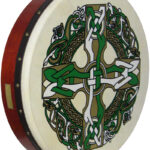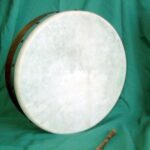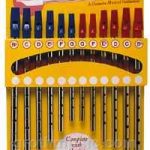An artist has the unique privilege of communicating with you visually. Sometimes, he may want to express his views in just a few lines.
I have used the new Visual Grammar’, which was developed by European Avant-gards of the 20s, and especially by Russian Avant-gards, to guide my research into art.
I create compositions using the foundation of Visual Grammar. This is done by taking in classical and modern schooling and then adding emotional content. It is like a rigid framework that is covered with soft living tissue.
I believe that the spiritual ideal – objective model is our true Reality.
“Realism” is a term used to describe art that portrays visible surfaces and objects. This is a sign and a result an incomplete, even defective mental horizon. It’s a primitive materialistic perspective on reality that reduces the visible surface of objects to a tiny fraction. However, many great pieces are not included in this category.
Pure abstract art is closer than me because it deals more with Reality’s essential parts than the matter. Particularly, the ideas, pure forms, and the form itself, seem to be lacking. The complete elimination of material objects in paintings as a class not only impoverishes artists’ ‘toolbox,’ but is also a sign of an idealistic approach to (the Reality) — almost similar to Plato’s concept of the changing world, which saw it as a poor and decaying copy of a perfect one.
Yes, abstract arts were a great source of 20th-century masterpieces. Roger Fry’s statement that “The shape of a work is an object of art has its own meaning and contemplation gives rise to a particular emotion for some people which does not depend on any association with the form with another thing” is something I agree with. It does not mean that a self-sufficient object cannot be made recognizable.
Roger Fry invented a definition of a popular term – Visual Music – in 1912 to describe Kandinsky’s work. It is the translation of music to paint.
If it weren’t so common, intuitivism, which is a theory that states the creative process is purely spontaneous, intuitive, and genius, wouldn’t even be worth discussing. I’ve heard it from many artists, one critic, and many dealers. They say the intellectual and physically aspects of creativity (i.e. The limitations of ideas and techniques are a curse to creativity. This is what I believe started out as an opposition against the degrading academymism or classicism’ in the middle of the 19th century. It could have begun when leaders of the Impressionist movement publicly rejected the ‘old Grammar’. They stressed that an impression is a direct impression. Artists should also be able to react spontaneously and emotionally to the impression as part of their creative process. Most of the artists in that period had a solid classical’ training before the rejection. They inherited all of the goods of that domain. Many of their followers in the 20th Century cannot say the same about them.
Avant-grad Movement in the first third of century was a breather. It filled in the void left over by a degrading impressionism and dead Academism. It not just restored the role of intellectual tools within the arts, but also greatly expanded the boundaries and possibilities of visual arts. Here, I want to stress that very similar and revolutionary processes were taking places at that time around the globe in the social realms, in science and technology, in literature and in music.







